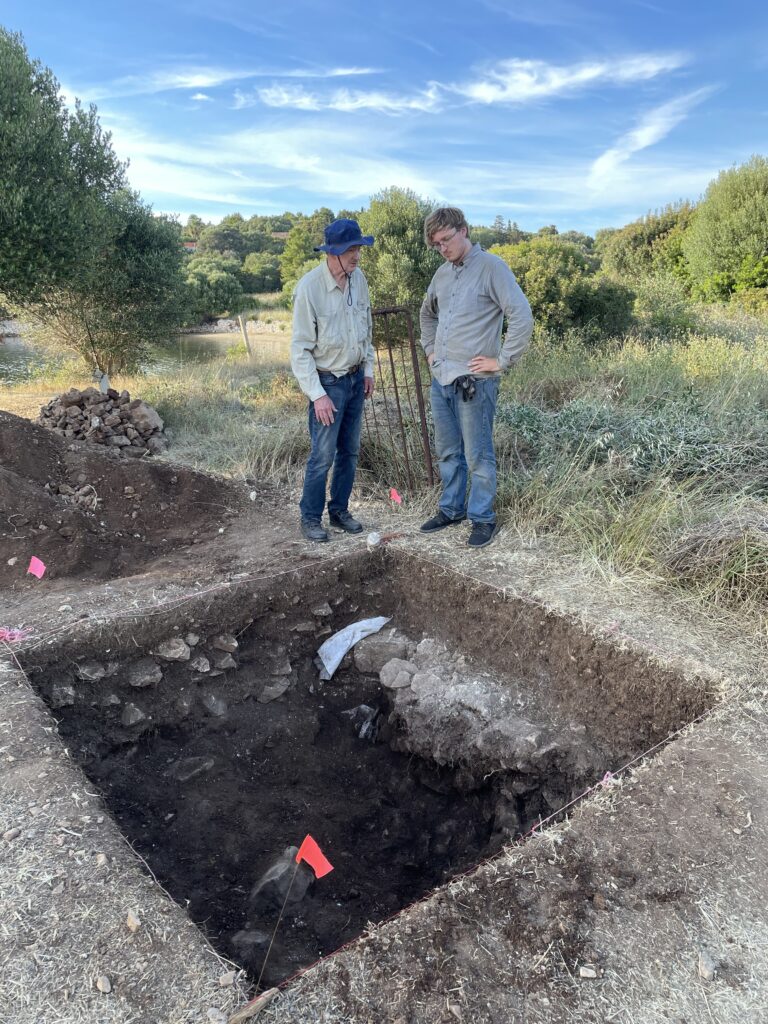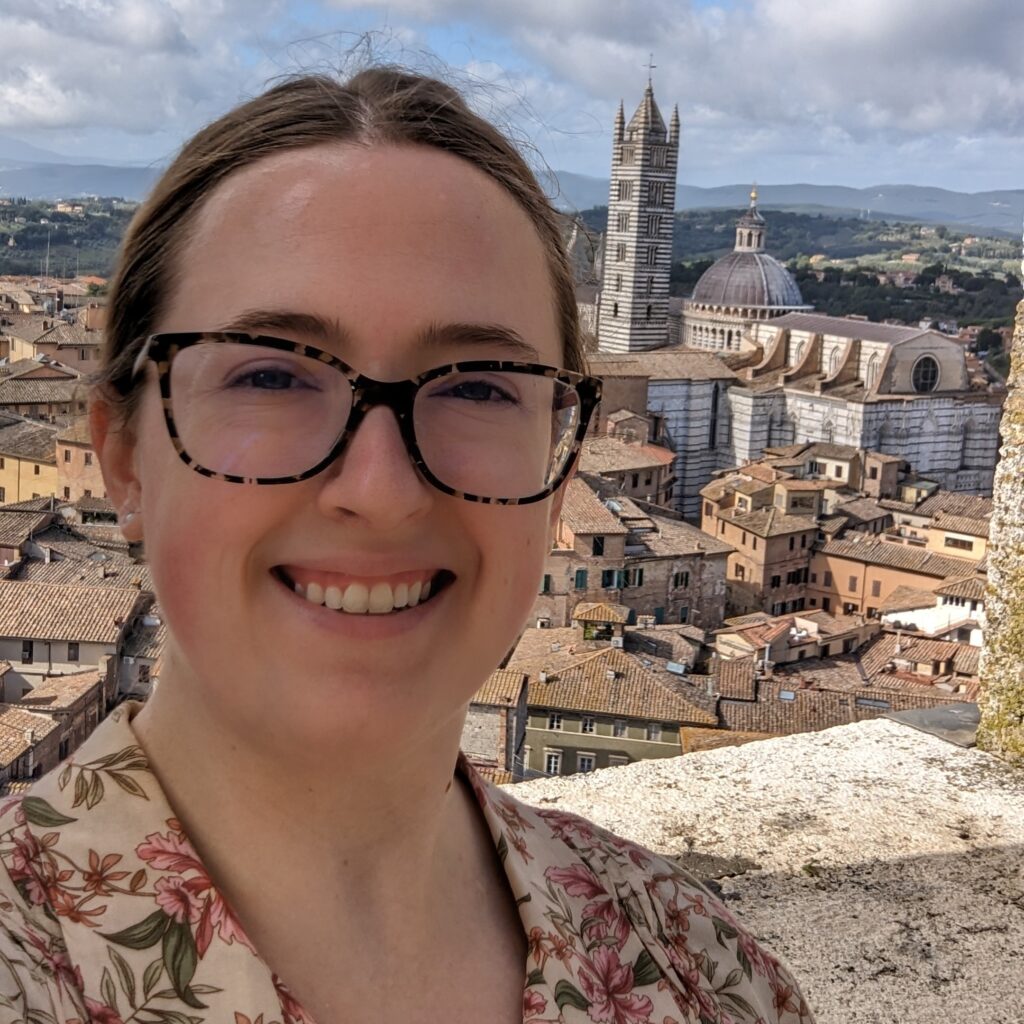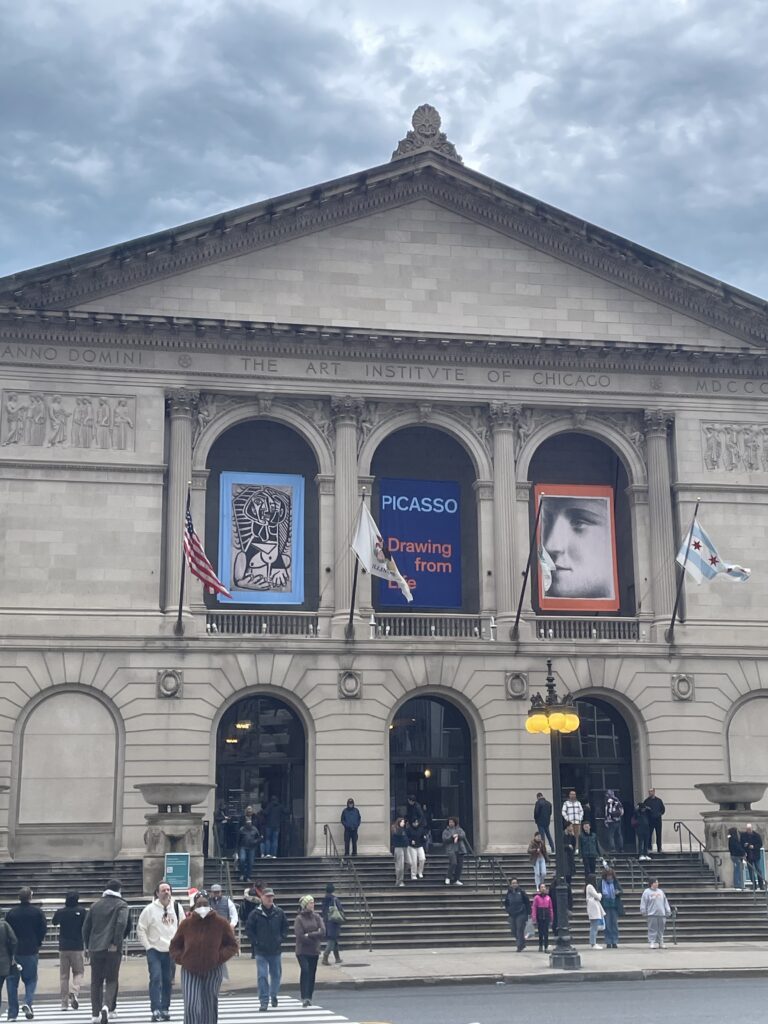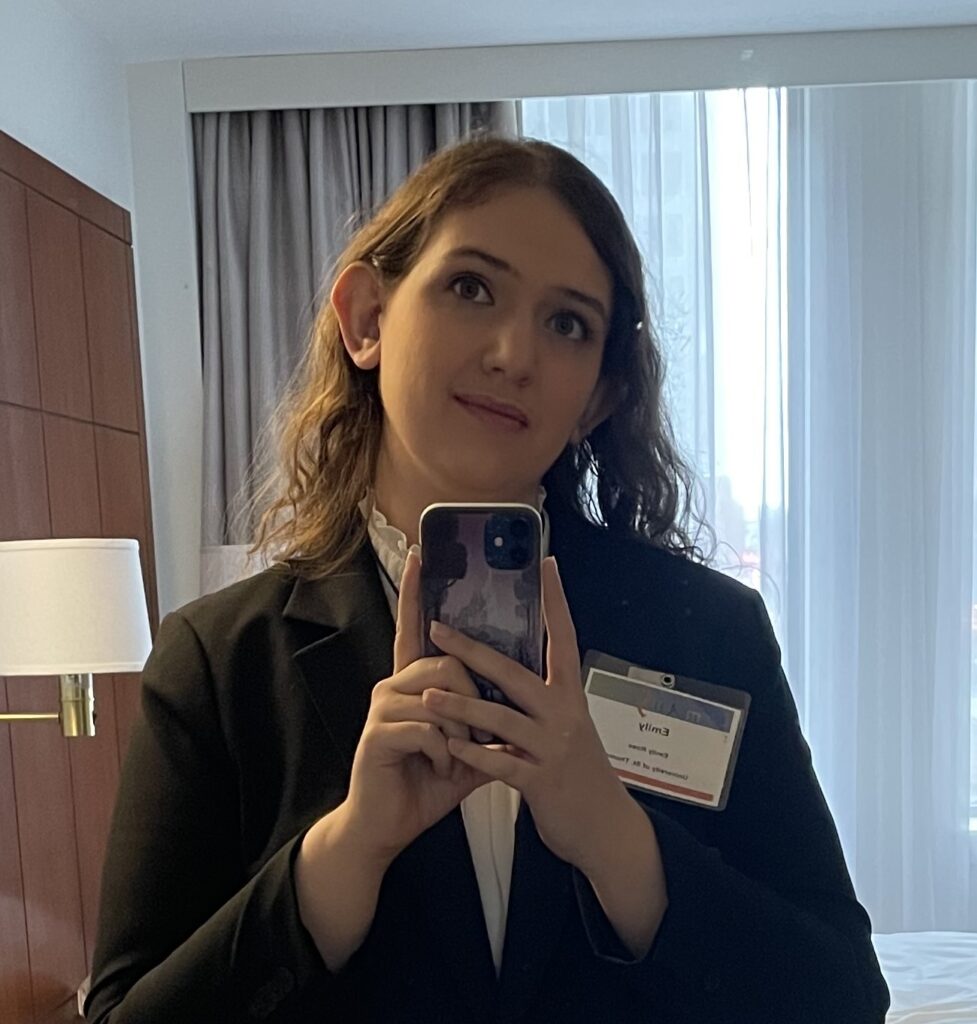This January, MA student Emily Ross travelled to Edinburgh in Scotland to study the murals by Phoebe Anna Traquair in what is now the Mansfield Traquair Center – a former Catholic Apostolic Church. While in Edinburgh the building had an open day to the public, and on all other days, Emily was in the National Gallery and National Museum of Scotland to see Traquair’s embroidery, enamel work, and paleontological illustrations, and at the National Library of Scotland to read Traquair’s letters and page through her smaller scale work illustrating Elizabeth Barrett Browning’s Sonnets from the Portuguese.
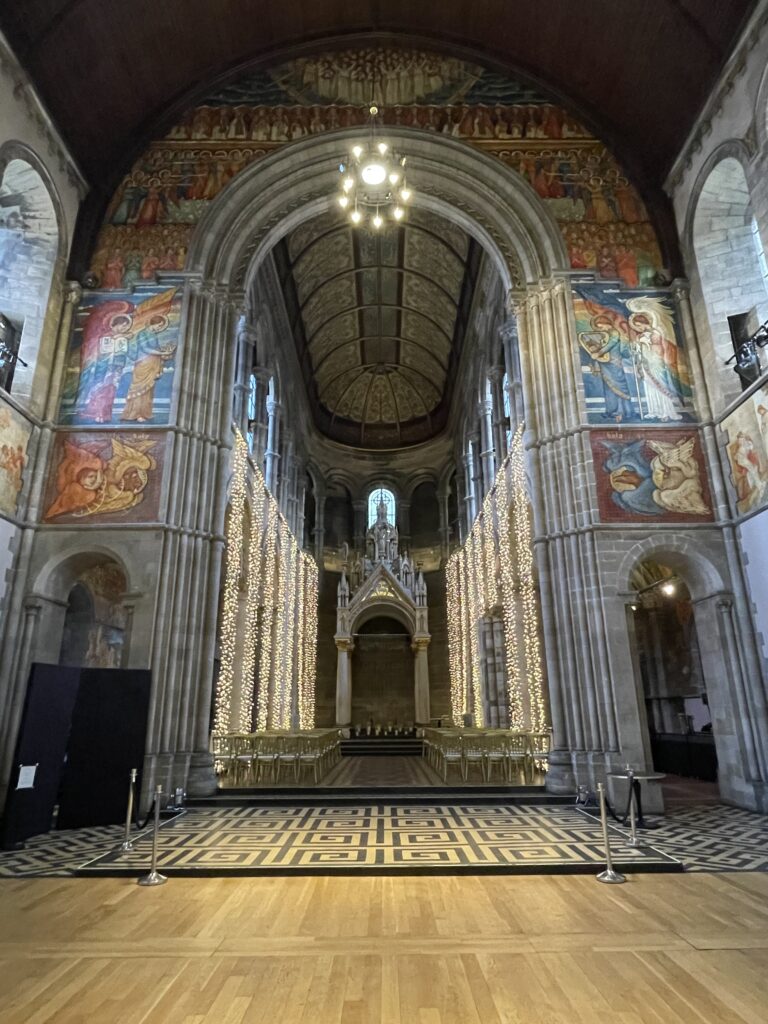
The chancel arch at the Mansfield Traquair Centre, decorated by Phoebe Anna Traquair. This was the first section of the church that Traquair painted, meant to depict worship in Heaven, and in line with the particular beliefs and structure of the Catholic Apostolic Church that commissioned her.
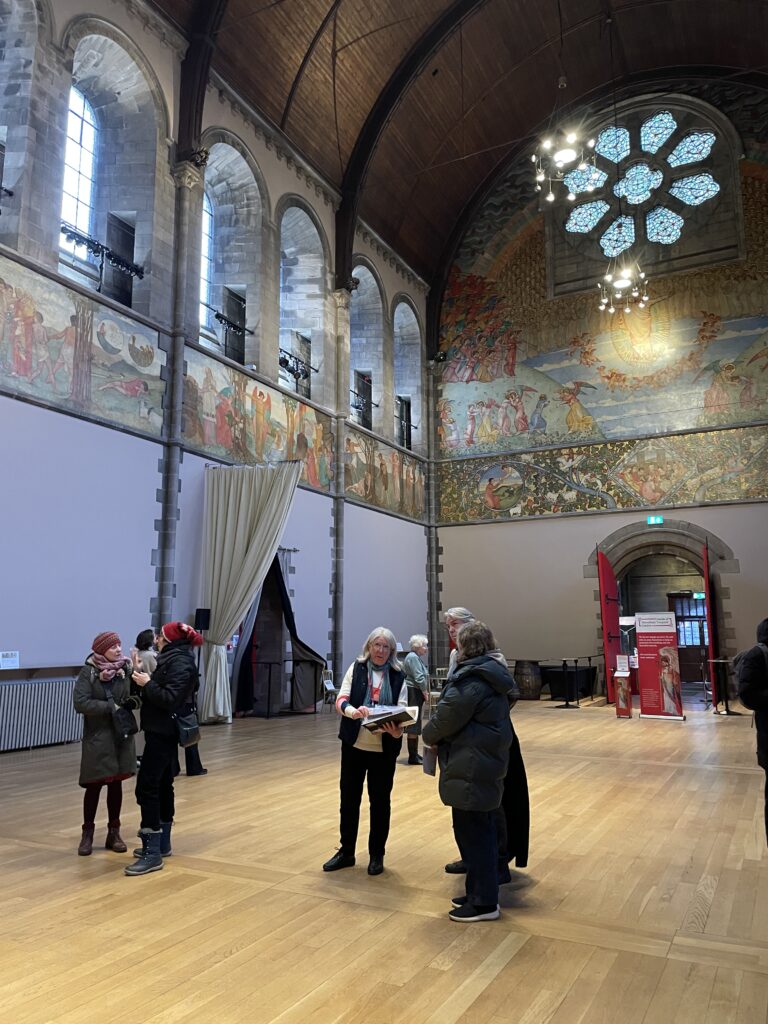
View of South and West walls at Mansfield Traquair Centre. Open only once a month, the open days for the Mansfield Traquair Centre are one of the few ways to get inside, short of booking the entire building for an event. Remarkably, the West Wall is not the usual Last Judgment found on church walls across eras, but a Second Coming, the uplifting millennial doctrine that that Catholic Apostolic Church was founded on.
The murals are in grand scale, and contain much visual synthesis and quotation from other pieces and artists Traquair knew, mentioned in her letters or painted in portrait in her other works. They also include landscapes from where she and her family went on vacation together, making them personal murals. Emily will be writing about these murals for her Qualifying Paper this semester.
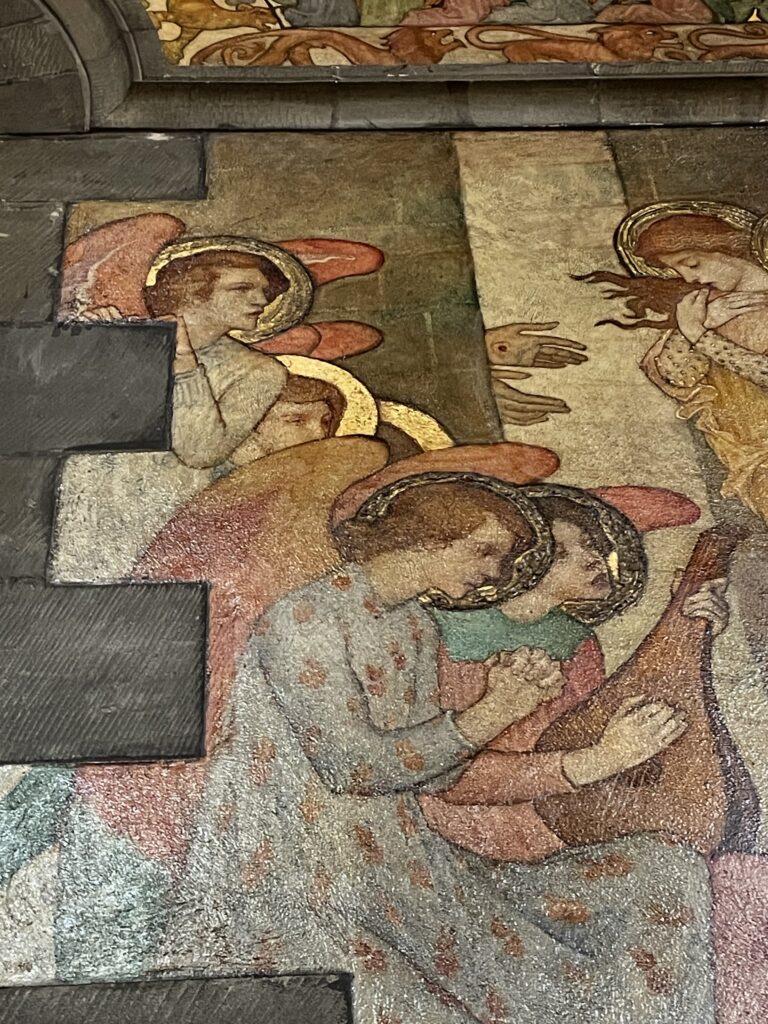
Detail of angels and hands of Christ in Parable of the Ten Virgins cycle, North Aisle of Mansfield Traquair Centre. Traquair worked in large scale and in minute illustration and marginalia, and was willing to take the playful interaction of picture to its frame that medieval marginalia did, letting an angel lean on a part of the building’s masonry.
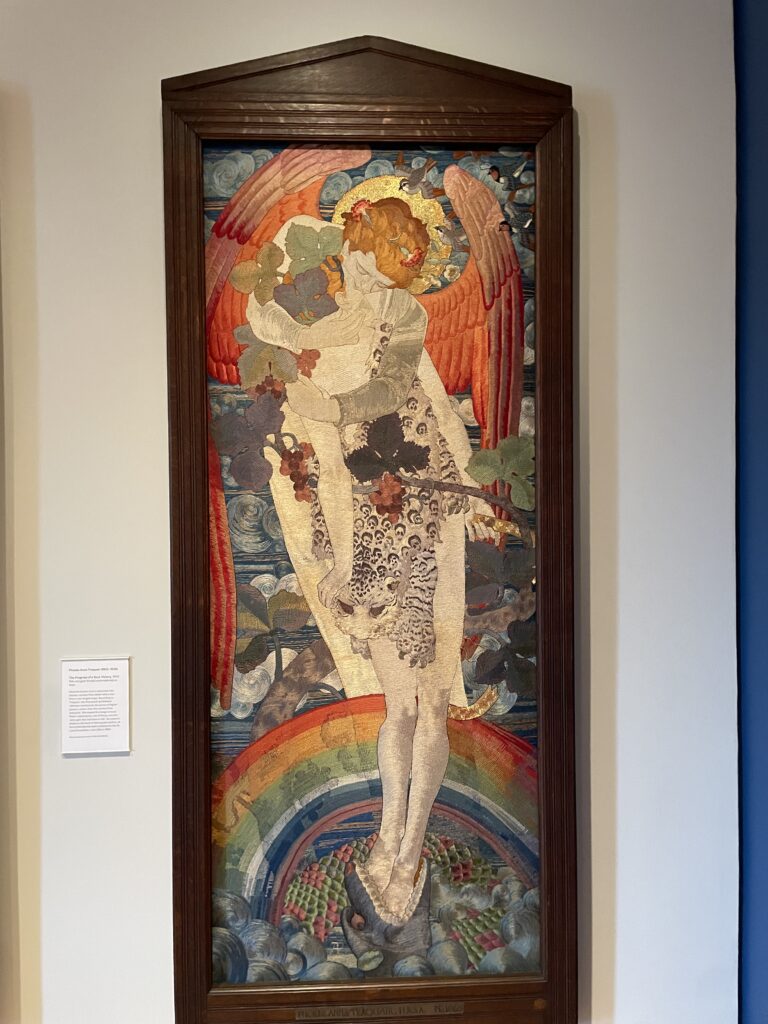
The Victory, embroidery panel by Phoebe Anna Traquair. This part of a series of four, called The Progress of a Soul, which Traquair was embroidering in the same time frame as she was making the murals in the church that is now the Mansfield Traquair Centre.
She also got to meet with Dr. Elizabeth Cumming, the first real scholar of Traquair’s work, who spearheaded the National Gallery of Scotland exhibition in 1993 that brought Traquair back to the attention of the Scottish art world.
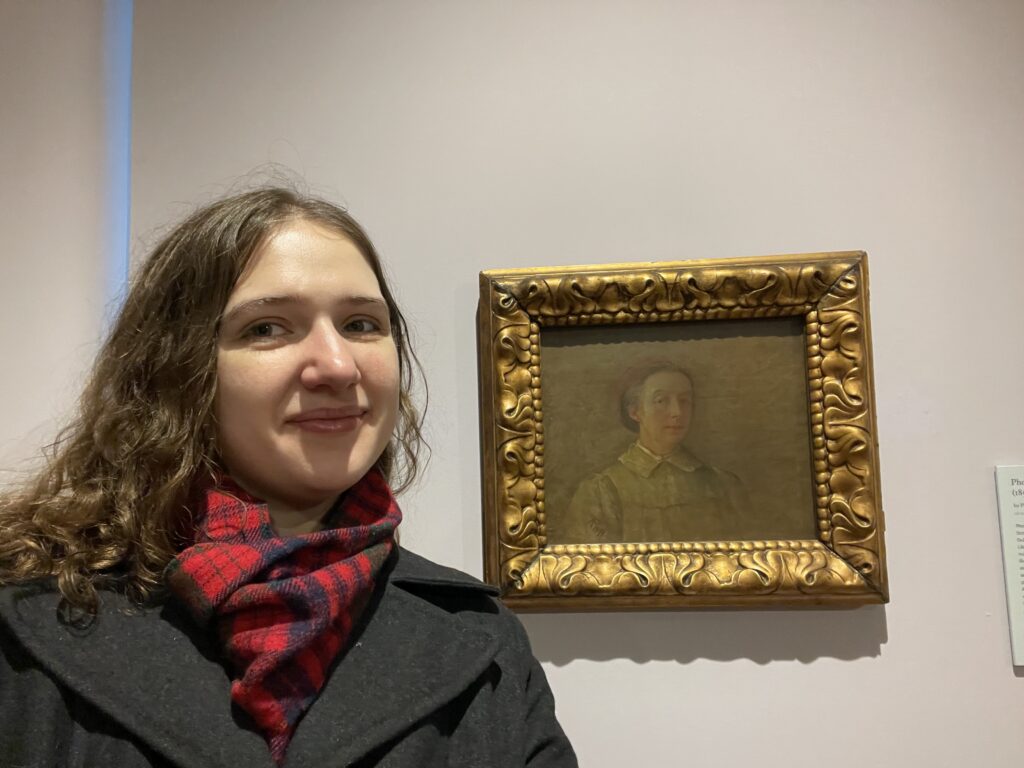
Emily Ross, with the self portrait of Phoebe Anna Traquair in the National Portrait Gallery of Scotland.
When she wasn’t doing scholarly visits, Emily was enjoying haggis with neeps and tatties.

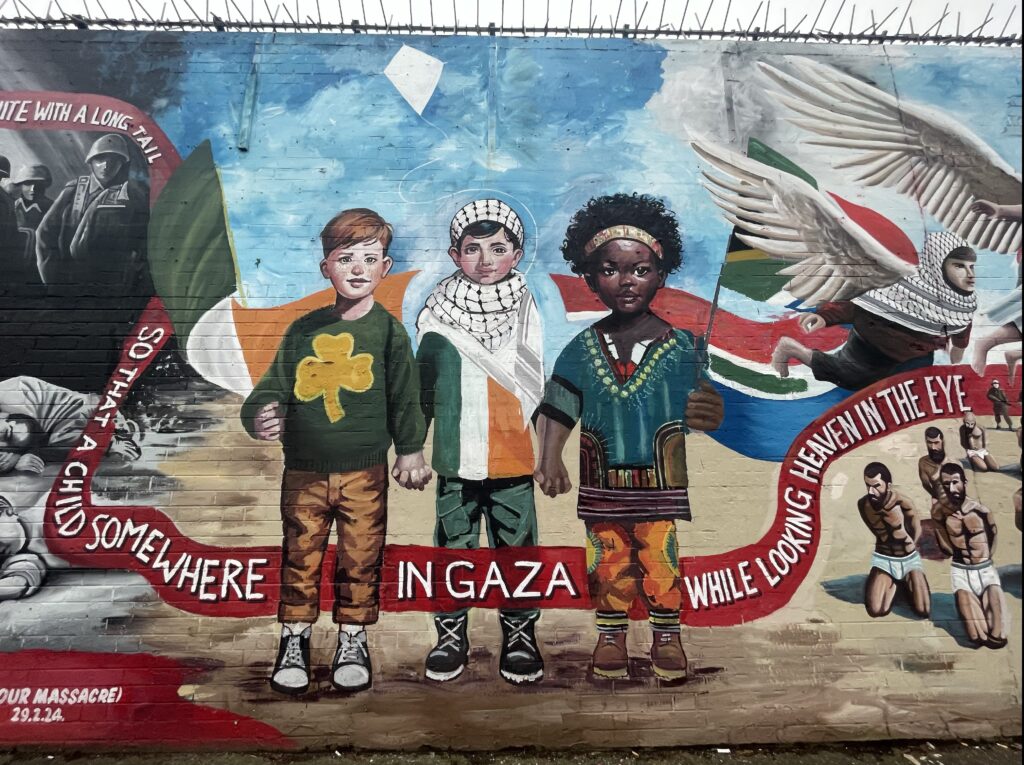


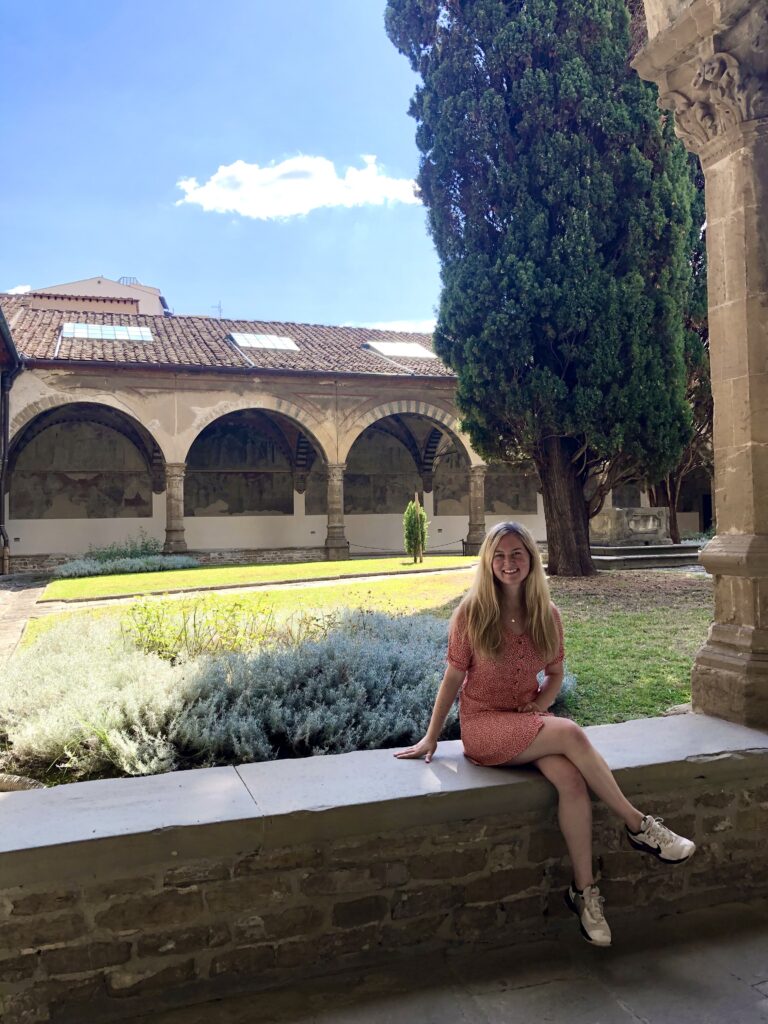
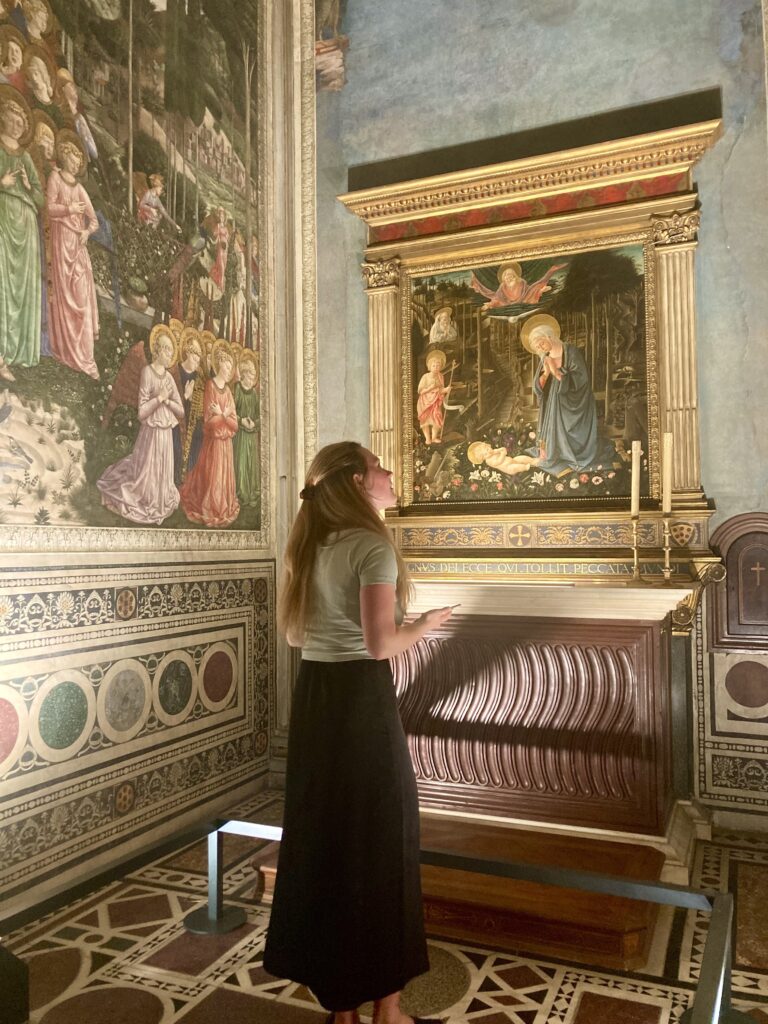
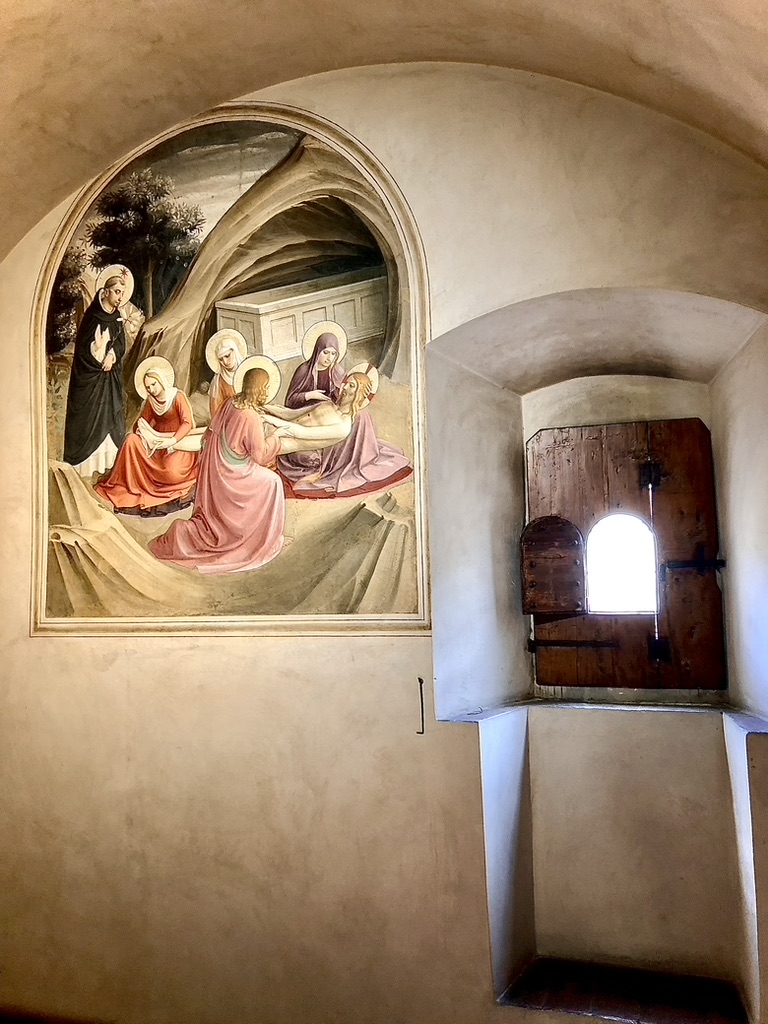
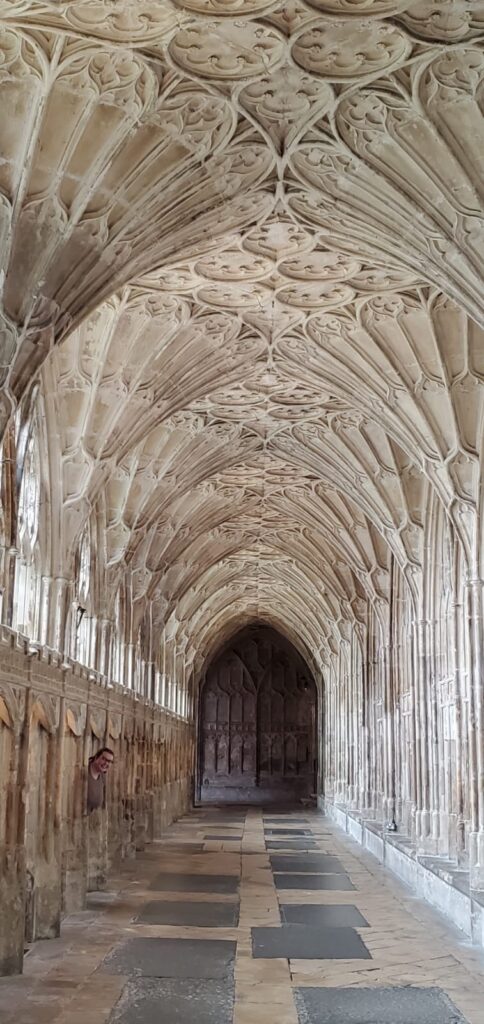
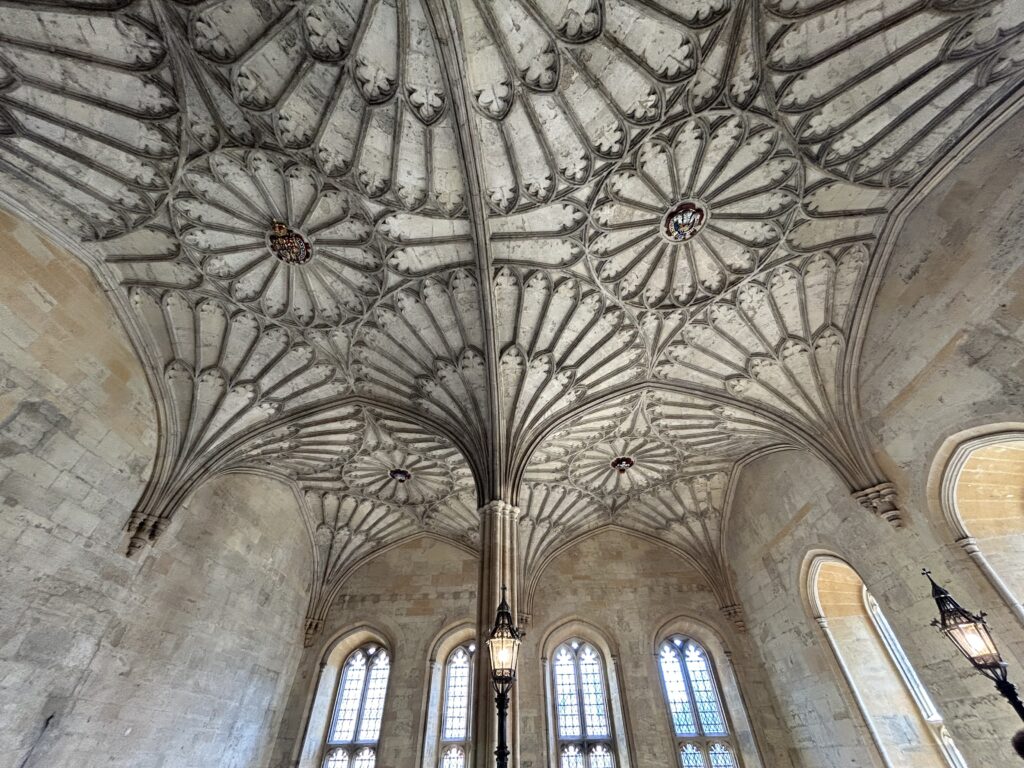
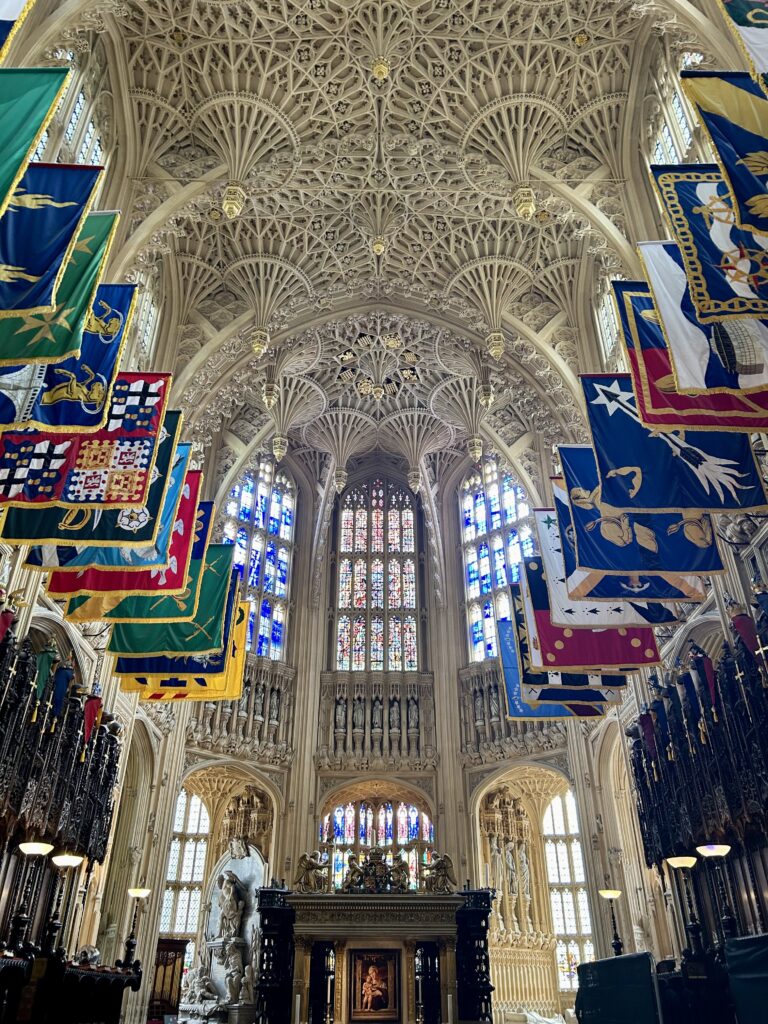
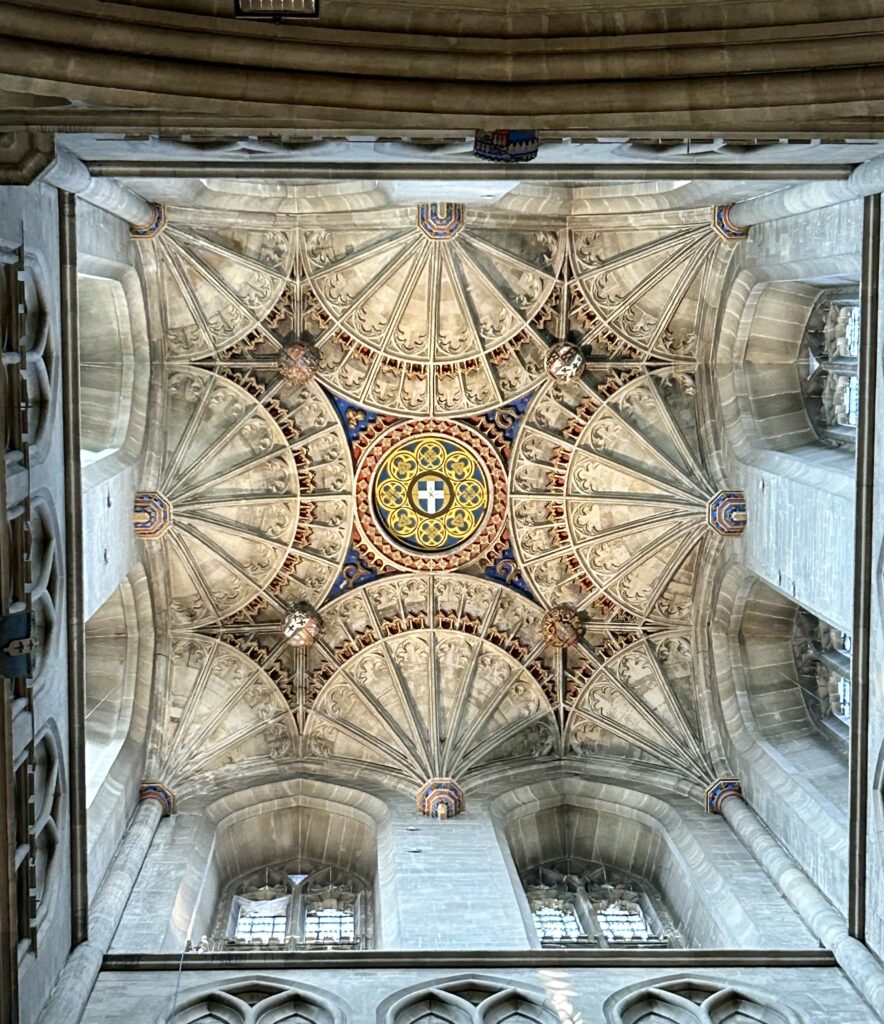
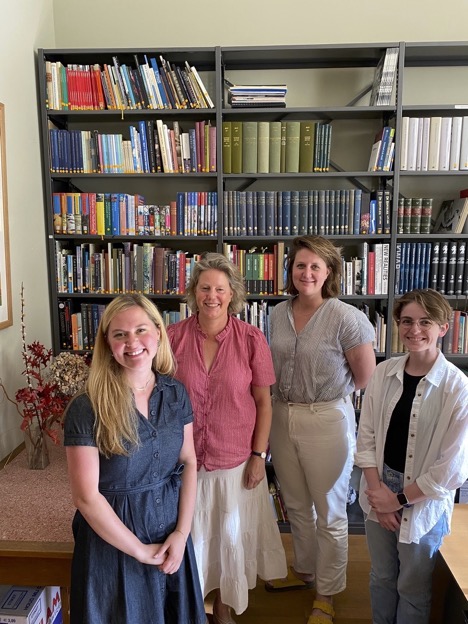
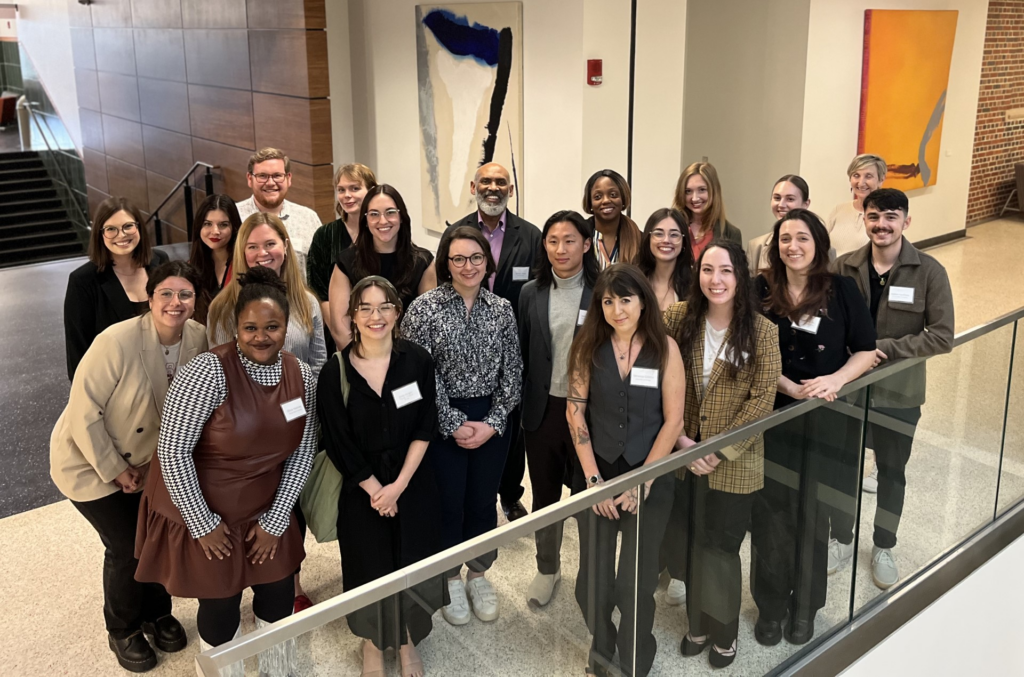
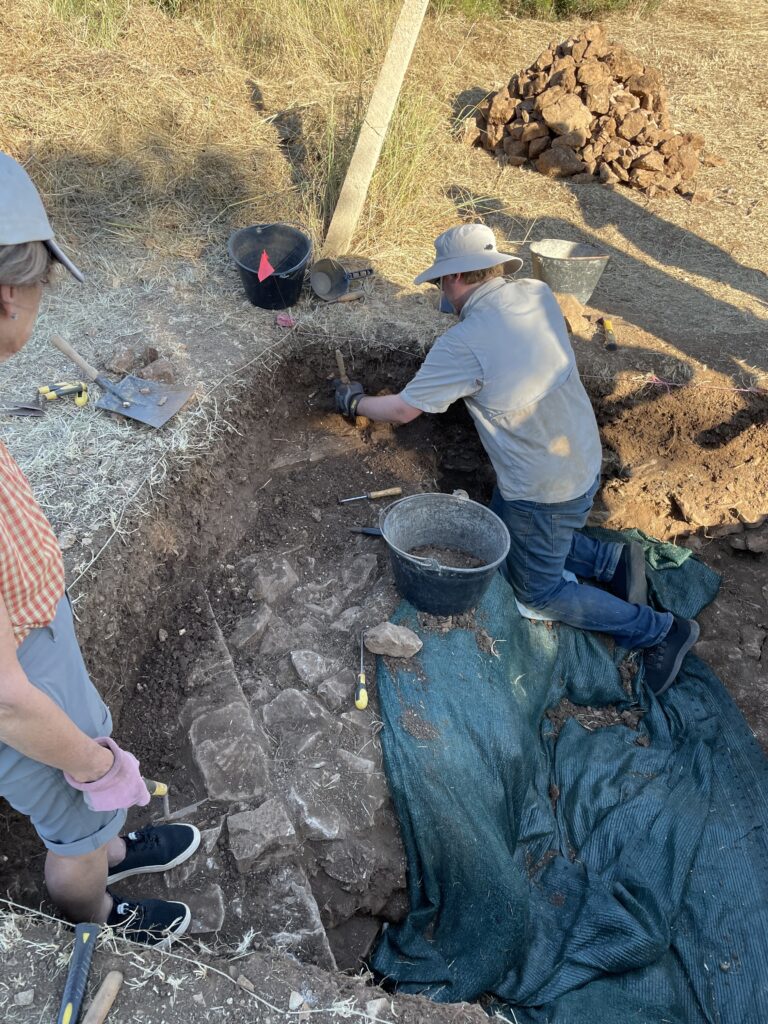
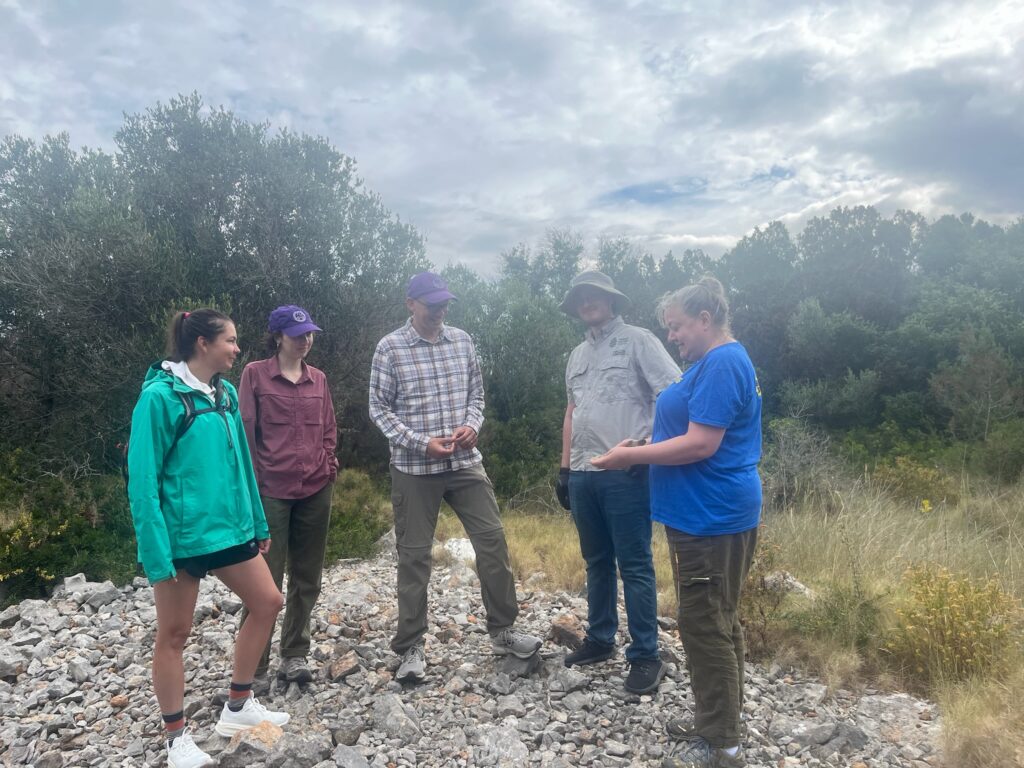 The project’s initial stages involved setting up the excavation site and estimating the location of the old Roman wall. The located wall was in much better condition than expected – walls from the early Roman period are usually better cut than those from later periods and were almost always repurposed for other structures. Excavation continued to the lower layers where the digging ran close to bedrock and the wall’s foundation could be identified, which took most of the remaining time that had been allotted for the dig. The excavation team had other projects running alongside the primary excavation, which members of the crew assisted with as needed.
The project’s initial stages involved setting up the excavation site and estimating the location of the old Roman wall. The located wall was in much better condition than expected – walls from the early Roman period are usually better cut than those from later periods and were almost always repurposed for other structures. Excavation continued to the lower layers where the digging ran close to bedrock and the wall’s foundation could be identified, which took most of the remaining time that had been allotted for the dig. The excavation team had other projects running alongside the primary excavation, which members of the crew assisted with as needed.